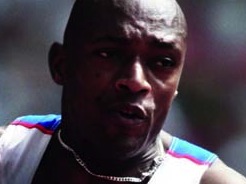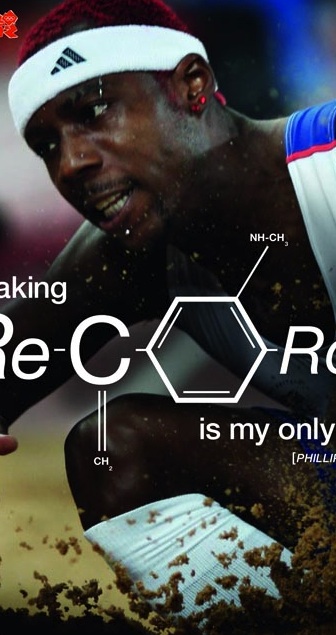GlaxoSmithKline's Anti-Doping Campaign for the London 2012 Olympics
 |
The first theme I noticed is the theme of power that the featured athlete has. This theme also serves as the discourse as well. The athletes are all positioned so that the audience must look up at them, they are in colors that represent not only a team but also a nation, and they are free from performance-enhancing substances. They are individuals but they are for the overall greater good. People desire to have what they have and in an attempt to do that, the majority of the audience seems to listen. |
| The next theme is that of determination. You can see the focus in the eyes of these athletes as they compete. They have their eyes on the prize. The text shows the athlete's determination to reach greatness without cheating. Each athlete is shown in the middle of his or her competition or performance. They have yet to reach their goal but their focus lets the audience know that they do not intend to let anyone or anything get in their way. |  |
 |
The last theme that I will discuss is the theme of struggle. With the determination that each athlete possesses to become the best that they can, there is the obvious signs of struggle. For Graham Edmunds and the other unnamed swimmer, the pictures chosen to represent them are of the athletes gasping for air. For Marlon Devonish and David Weir, you can see their veins popping out of their forehead and neck respectively. Phillips Idowu is fighting to stand up after his triple jump and Beth Tweddle has her arms twisted as she must precisely place her hands just so on the bar to do her trick. It is not an easy road that these athletes travel down to get there. They devote their lives to being in that position with Olympic gold in sight but it doesn't get easier for them. It is not a simple task for an athlete at any level to have the pressure of being so close yet so far. They rely on a few seconds, a few minutes, a few hours to determine their fate. Even an Olympic or Paralympic athlete with the utmost talent and poise is vulnerable and the audience can easily pick up on that recurring theme of struggle. |
Themes like these arise in sports related advertisements all the time. We expect these themes to shine through because power, struggle, and determination are almost synonymous with what an athlete is. It is what we don't always see that may surprise you!
Rose, Gillian. "Discourse Analysis I." Visual Methodologies: An Introduction to Researching with Visual Materials. 3rd ed. Los Angeles: Sage, 2012. 189-226. Print